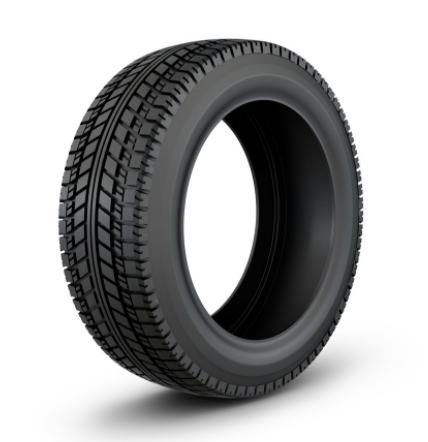Why do you need to do dynamic balancing for a new tire?
In fact, the new tires in the factory, there will be dynamic balance of substandard products and wheel weights will be added for keeping balance if needed. Gu Jian and others in the "rubber and plastic technology and equipment" journal issued a paper called "tire manufacturing process affects the tire uniformity and dynamic balance of the elements and control".
The paper mentions: the new tires used in the experiment, the dynamic balance pass rate of 94%. That is to say: there is a 6% chance of buying a tire that is not very qualified when the dynamic balance comes out of the original factory. There are more reasons for this situation, mainly because the tire processing process, each process is a reasonable error, reasonable error together, may cause the overall failure.

Qualified tire mounted on the wheel, but the overall balance is not necessarily.
The 6% of unqualified products can be said that the chances of buying them are not too big, but in fact, even if the new tires are qualified, mounted on the iron or aluminum wheels, which become a new whole, the dynamic balance may also be a problem.
Wang Haichun and Liu Xing published a paper on "Quality Control Research on Dynamic Balance of Wheel Tire Assembly" in the journal "Volkswagen".
It says: In the process of tire assembly, the dynamic balance failure rate of the wheel alone is 4.28%, and after the qualified tires are installed, the overall failure rate increases to 9% instead.

What may happen if you don't do dynamic balancing?
So much talk, if you do not do dynamic balancing, what could happen? Will the tire explode?
From the principle: the tire dynamic balance problem, in fact, the mass is not evenly distributed, the rotation is a little head heavy feeling.
The heavy side of the centrifugal force will be larger, can not pull, light may be the opposite.
Imagine: the process of tumble drying on the home washer or dryer is a dynamic imbalance.
This will lead to a variety of car conditions, wheel sway, bumps, jumping ......
And it will also lead to additional wear and tear on the tires, steering, suspension and such, as well as increased fuel consumption.
Does it make sense to draw a line to align it when repairing a tire?
In principle, it is also to ensure the original counterweight. When we are in the tire store, we may also encounter this situation. The worker makes a mark on the tire or wheel, draw a fork, make a line, make a mark.
When the tire is mounted against the mark, the original position and then mounted back, you can do without dynamic balancing.
This method is theoretically feasible, which is equivalent to removing the tire and putting it back on from the same position, the dynamic balance will not change.
But generally that is, after the tire repair will be used, for new tires, things are different, basically is invalid, and the premise is that the weight of the tire above, the change can not be too big.
Therefore, the tires have been dismounted, changed the weight will have to do dynamic balancing.
Because even if a mark is made, there is always a little deviation when mounted, and the imbalance is also a little deviation.
Post time: May-22-2023





